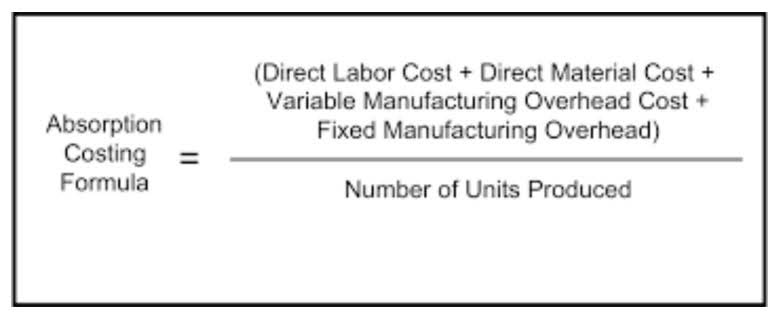
The most common types of long-term liabilities are bonds and mortgages. Fixed Assets are long-term assets that a company owns and uses in the production of its goods or services. These assets usually have alifespan of more than one year and include things such as land, buildings, equipment, and patents. The amount of liabilities represents the value of the business assets that are owed to others.
Owner’s Equity
They check if profits are being used as dividends, company improvements, or retained as cash. The basic accounting formula highlights the calculation of the assets and the relationship of the three elements to each other. Total assets are total liabilities, and shareholder’s equity is added together. The main use of this equation is for the accurate recording of the balance sheet. The double-entry practice ensures such accuracy by maintaining balance in each transaction. The income and retained earnings of the accounting equation is also an essential component in computing, understanding, and analyzing a firm’s income statement.
Company worth
The revenue (R) less expenses (E) show the net income on stockholder’s equity. The accounting equation formula helps in ledger balancing using double-entry accounting. The ledger has debits on the left side and credits on the right side.
Module 1: The Role of Accounting in Business
- The Basic Accounting Equation should always balance due to double entry accounting.
- Looking back, we see that Ed owes the bank $25,000 and his employee $15,000.
- A debit refers to an increase in an asset or a decrease in a liability or shareholders’ equity.
- These assets usually have alifespan of more than one year and include things such as land, buildings, equipment, and patents.
- Profits retained in the business will increase capital and losses will decrease capital.
The accounting equation is the foundation of double-entry bookkeeping which is the bookkeeping method used by most businesses, regardless of their size, nature, or structure. This bookkeeping method assures that the balance sheet statement always equals in the end. To further illustrate the analysis of transactions and their effects on the basic accounting equation, we will analyze the activities of Metro Courier, Inc., a fictitious corporation. Refer to the chart of accounts illustrated in the previous section.
Owners’ equity typically refers to partnerships (a business owned by two or more individuals). You have likely heard of the word entity in your life in some shape or form. We think of economic entities as any organization or business in the financial world. Shaun Conrad which of the following is the basic accounting equation? is a Certified Public Accountant and CPA exam expert with a passion for teaching. After almost a decade of experience in public accounting, he created MyAccountingCourse.com to help people learn accounting & finance, pass the CPA exam, and start their career.
Current Liabilities

Experienced in using Excel spreadsheets for her bookkeeping needs and created a collection of user-friendly templates designed specifically for small businesses. Equity is the amount that owners have introduced into the business and any profit and loss (retained earnings). However, equity can also be thought of as investments into the company either by founders, owners, public shareholders, or by customers buying products leading to higher revenue. Apple pays for rent ($600) and utilities ($200) expenses for a total of $800 in cash. Some common examples of tangibles include property, plant and equipment (PP&E), and supplies found in the office. Non-current assets or liabilities are those that cannot be converted easily into cash, typically within a year, that is.
- A credit in contrast refers to a decrease in an asset or an increase in a liability or shareholders’ equity.
- As a small business owner, you need to understand a few key accounting basics to ensure your company operates smoothly.
- Think of liabilities as obligations — the company has an obligation to make payments on loans or mortgages or they risk damage to their credit and business.
- With Deskera you can automate other parts of the accounting cycle as well, such as managing inventory, sending invoices, handling payroll, and so much more.
- He also took a soft loan of $4000 from a credit union to buy office supplies.
Owners Equity (or Equity)
The accounting equation shows how a company’s assets, liabilities, and equity are related and how a change in one results in a change to another. In the basic accounting equation, assets are equal to liabilities plus equity. As you can see, no matter what the transaction is, the accounting equation will always balance because each transaction has a dual aspect.
Shareholders’ equity comes from corporations dividing their ownership into stock shares. Receivables arise when a company provides a service or sells a product to someone on credit. In other words, all assets initially come from liabilities and owners’ contributions. During the month of February, Metro Corporation earned a total of $50,000 in revenue from clients who paid cash.
At the same time, Capital increased due to the owner’s contribution. Remember that capital is increased by contribution of owners and income, and is decreased by withdrawals and expenses. Although the balance sheet always balances out, the accounting equation can’t tell investors how well a company is performing. We know that every https://www.bookstime.com/ business holds some properties known as assets. The claims to the assets owned by a business entity are primarily divided into two types – the claims of creditors and the claims of owner of the business. In accounting, the claims of creditors are referred to as liabilities and the claims of owner are referred to as owner’s equity.
What is the balance sheet?
- The accounting equation states that total assets is equal to total liabilities plus capital.
- He forms Speakers, Inc. and contributes $100,000 to the company in exchange for all of its newly issued shares.
- It’s called the Balance Sheet (BS) because assets must equal liabilities plus shareholders’ equity.
- Put another way, it is the amount that would remain if the company liquidated all of its assets and paid off all of its debts.
- The accounting equation is a concise expression of the complex, expanded, and multi-item display of a balance sheet.
- To understand the accounting equation better, let’s take a few practical transactions and analyze their effect.
Essentially, the representation equates all uses of capital (assets) to all sources of capital, where debt capital leads to liabilities and equity capital leads to shareholders’ equity. It can be defined as the total number of dollars that a company would have left if it liquidated all of its assets and paid off all of its liabilities. Assets represent the valuable resources controlled by a company, while liabilities represent its obligations. Both liabilities and shareholders’ equity represent how the assets of a company are financed. If it’s financed through debt, it’ll show as a liability, but if it’s financed through issuing equity shares to investors, it’ll show in shareholders’ equity.

